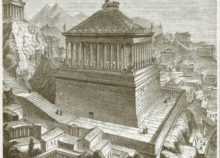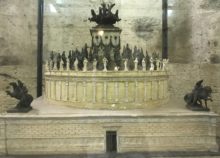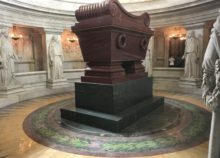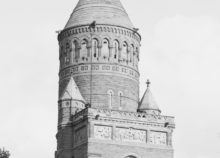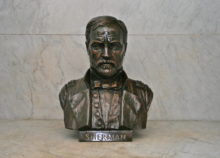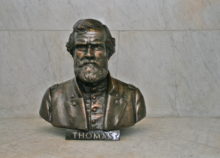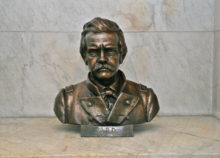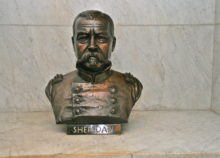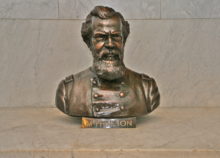Building Design
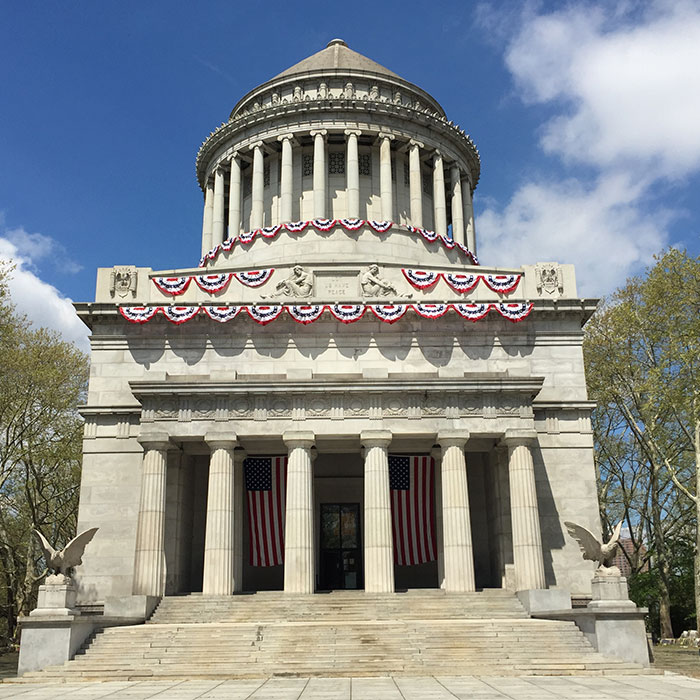
Dedicated in 1897, Grant’s Tomb is the largest mausoleum in the Western Hemisphere.* Rendered in an eclectic neoclassical style, the monument is adorned by Doric columns on the lower level and a circular cupola above. The lower portion of the memorial is a square measuring 90 feet on each side, surmounted by a cornice and parapet 72 feet high. The cupola, which measures 72 feet in diameter, rises from there with a stepped pyramidal top. The steps at the front portico are 70 feet wide. The monument rises 150 feet above the ground and over 280 feet above the banks of the Hudson River.
Exterior Images
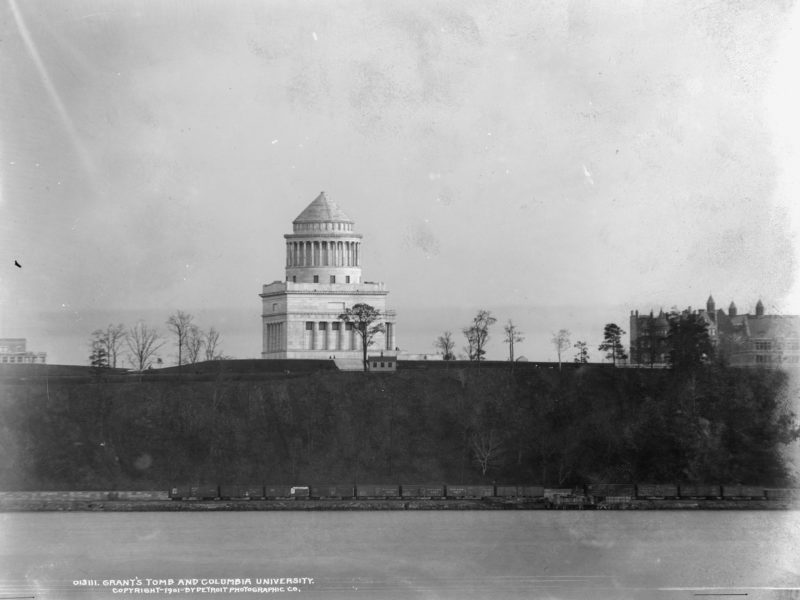
Early View of Grant’s Tomb from the Hudson River
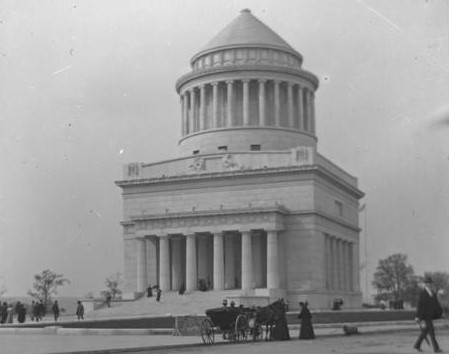
Early view from Riverside Drive
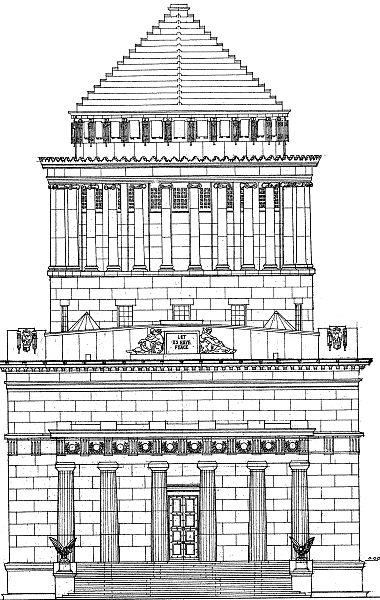
Architectural drawing of the South elevation (HABS)
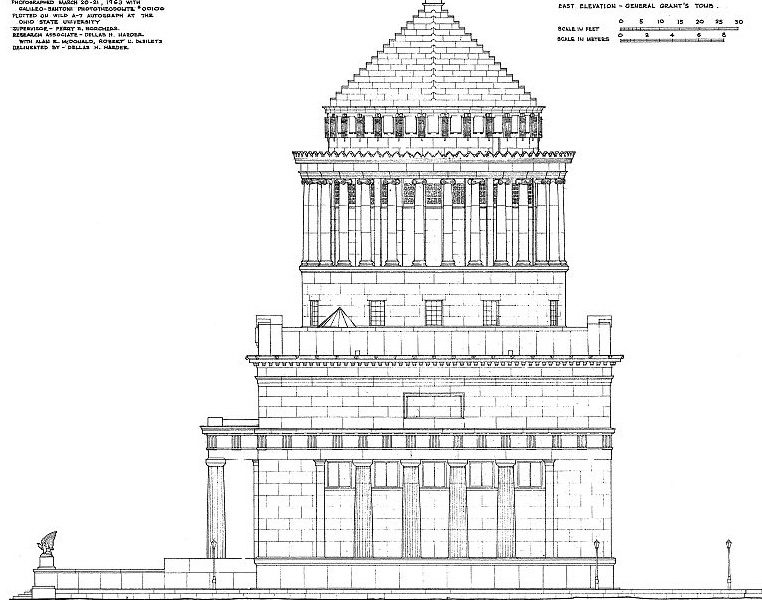
Architectural drawing of the East elevation (HABS)
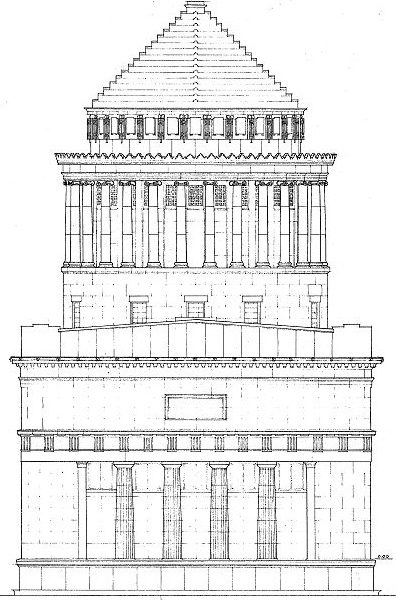
Architectural drawing of the North elevation (HABS)
The architect of the monument, John H. Duncan, envisioned “a Monumental Tomb, no matter from what point of view it may be seen.”
The structure symbolically faces south.
*At 180 feet, the Garfield Memorial in Cleveland, Ohio, surpasses Grant’s Tomb in height, but not in volume.
Design Influences
Relief Design
On the facade of the Tomb is the epitaph, “LET US HAVE PEACE,” a quote taken from Grant’s letter accepting the Republican nomination for president that would characterize the ultimate aims of his public career. Allegorical figures probably representing Victory and Peace, sculpted by J. Massey Rhind, are depicted on either side of the sign, marking Grant’s importance both in war and in peace.

On the four pendentives in the interior of the Tomb are relief sculptures, also by Rhind, with allegorical representations of Grant’s . . .
-
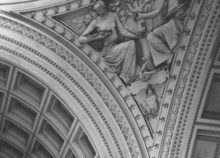
Birth - note the tree of life and figures holding symbols of education and the home.
-
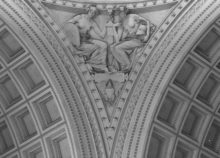
Military Life - both figures hold emblems used in war.
-
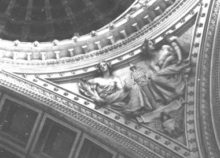
Civilian Life - accompanying the figures are symbols of victory, prosperity, and Grant’s authority as president.
-
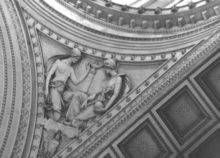
Death - symbols of death, (possibly) strength, and eternity are held by the figures
Interior
The interior is largely made of Carrara and Lee marble from Italy and Massachusetts respectively. It forms the outline of a cross, with the greatest length reaching 76 feet. Arches rising 50 feet above the floor connect piers of masonry at the four corners of the interior. A gallery at the upper level of the interior is topped by a paneled dome 105 feet above the floor level.
Inside a circular crypt, on ground level, are sarcophagi containing the remains of President and Mrs. Grant. The sarcophagi are made of red granite from Montello, Wisconsin, and each weighs 8½ tons. Around the crypt is a path along which one will find niches containing busts of five of Grant’s greatest lieutenants, added in 1938-1939 as part of a WPA project.
Interior Images
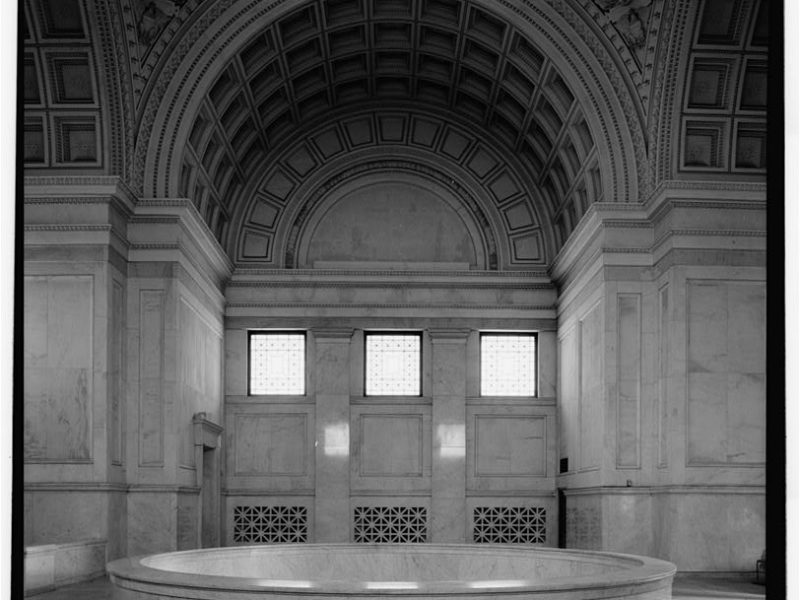
Main Floor from West (HABS)
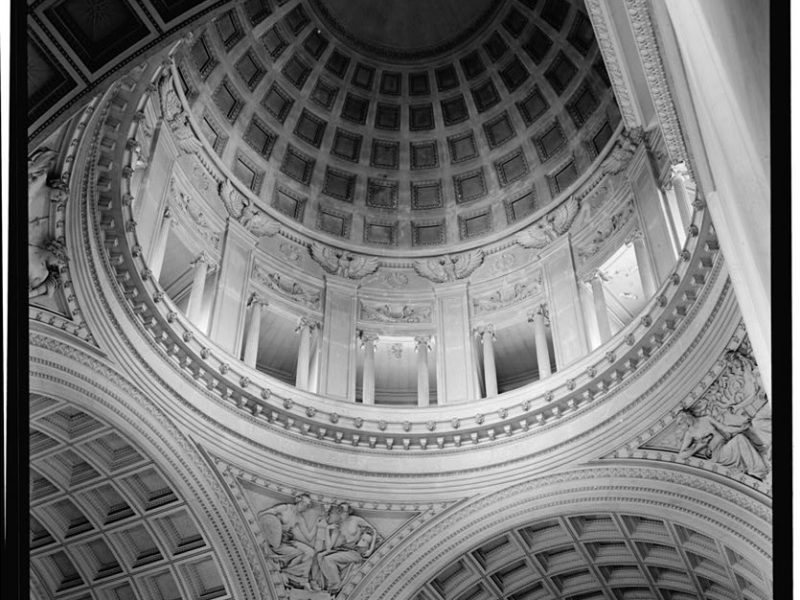
Dome and Northeast Pendentive (HABS)
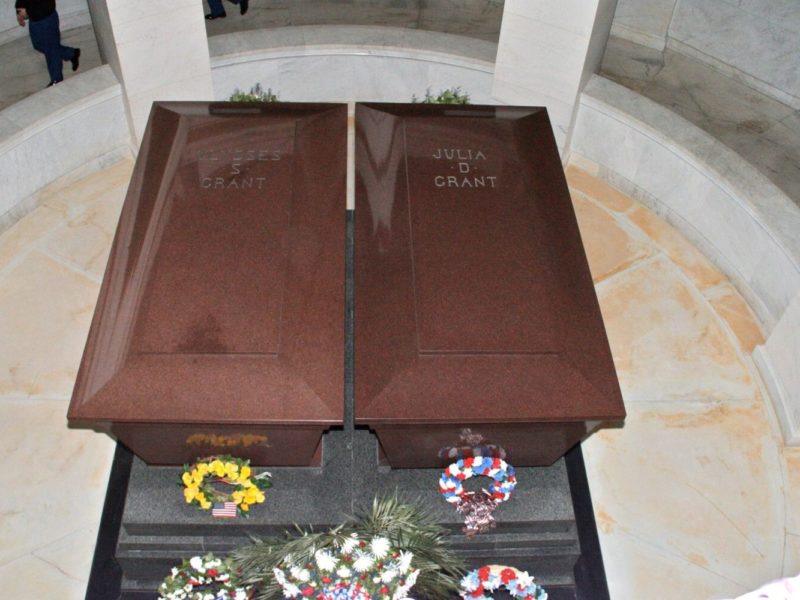
Ulysses and Julia Grant's sarcophagi
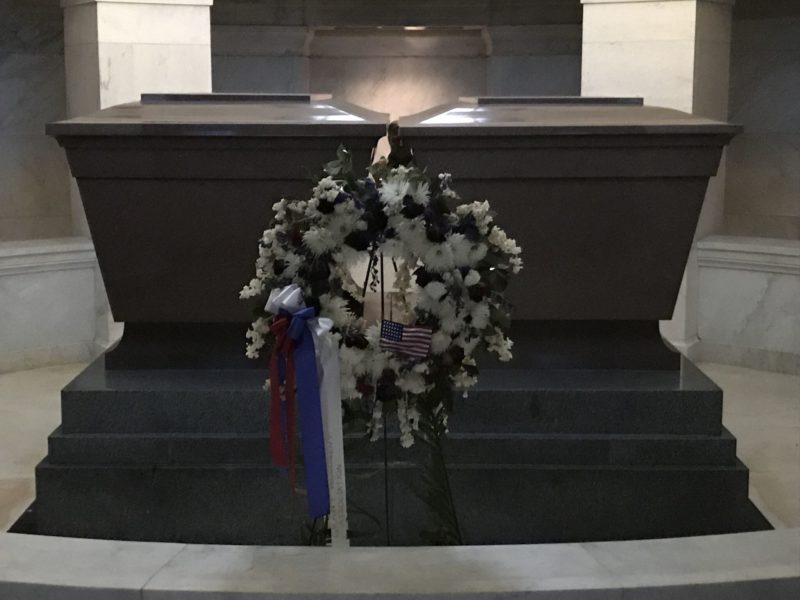
Ulysses and Julia Grant's sarcophagi
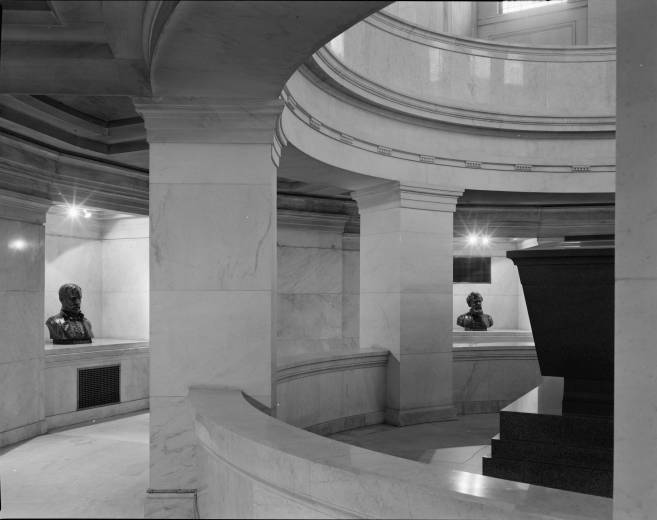
The Crypt (HABS)
Murals and Furnishings
In 1966, mosaic murals by Allyn Cox were added to three lunettes inside Grant’s Tomb. The murals portray scenes from three of Grant’s greatest campaigns.
- Grant (on horseback) during the Vicksburg Campaign (November 1862 – July 1863).
- Grant on Missionary Ridge, to the right of General George H. Thomas (November 25, 1863).
- General Robert E. Lee surrenders to Grant at Appomattox Court House (April 9, 1865).
The Tomb also contains two reliquary rooms with murals by Dean Fausett that feature classical themes as well as maps depicting the theater of the Civil War. Locations of battles on the maps are indicated by crossed sabers. Grant’s battles are additionally indicated with a star. In the center of each reliquary room are bronze trophy cases containing replicas of Civil War battle flags.
Murals and Furnishings Images
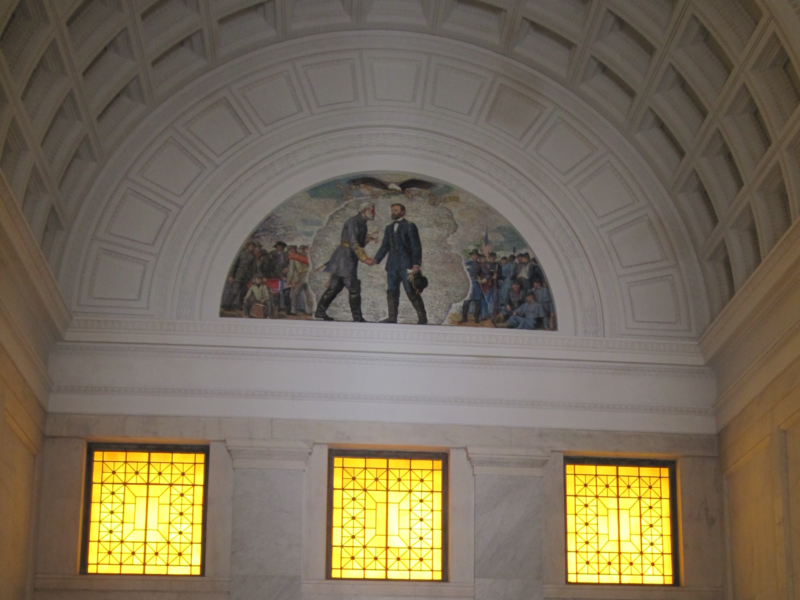
North wall with Appomattox mural by Allyn Cox
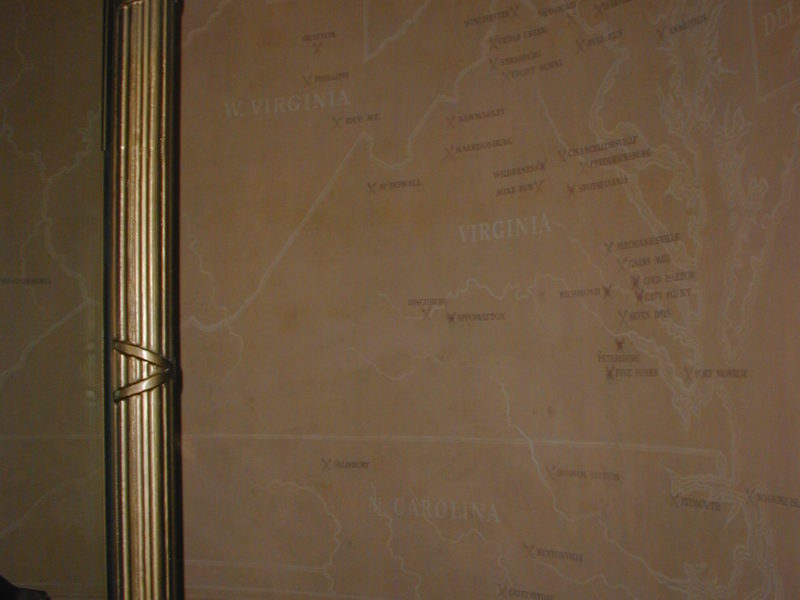
Dean Fausett mural in reliquary room
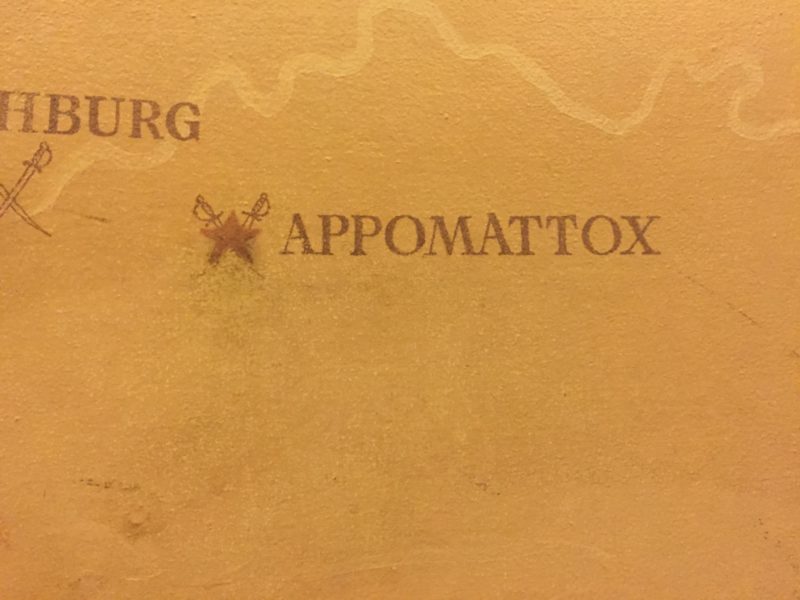
Murals mark Grant’s Battles with a star
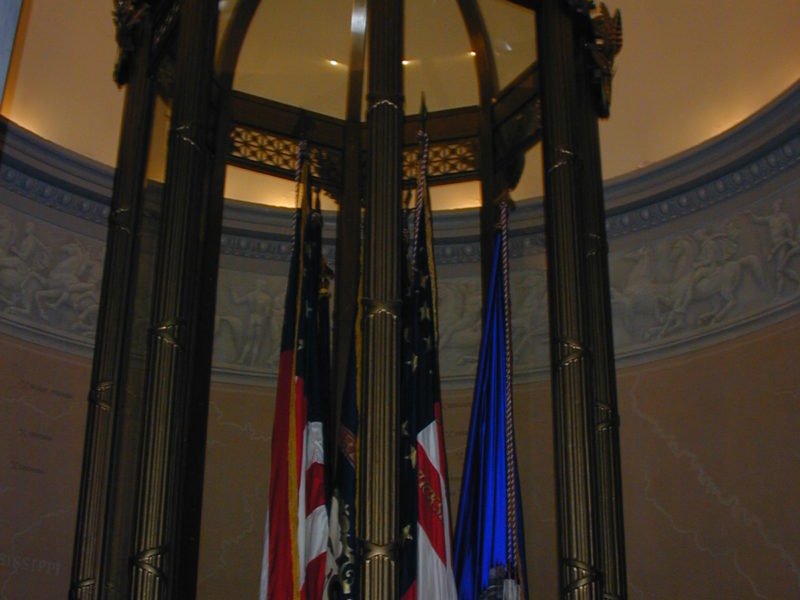
Bronze trophy case with replica Civil War battle flags
Temporary Tomb Site
Behind the Tomb is a Chinese memorial on the site of Grant’s temporary tomb. Enclosed by a black fence, this site contains a Chinese-English plaque and a gingko tree planted on behalf of Li Hung Chang, the Chinese viceroy who had met and developed a friendship with Grant during the latter’s trip around the world.
The Overlook Pavilion
Across the street from Grant’s Tomb is an overlook pavilion, constructed in 1910, which originally provided public restrooms in its lower level before falling out of use between the 1960’s and its reopening in 2011 as a makeshift visitor center. The new facility has two single-user restrooms, a gift shop, and a presentation room.
The presentation room has audio-visual equipment and seating for groups. Six exhibit panels on its walls feature information about President Grant’s life and his final resting place. The room also contains three display cases containing artifacts from the monument’s history, including a model equestrian statue of General Grant designed by Paul Manship.
Tomb Images
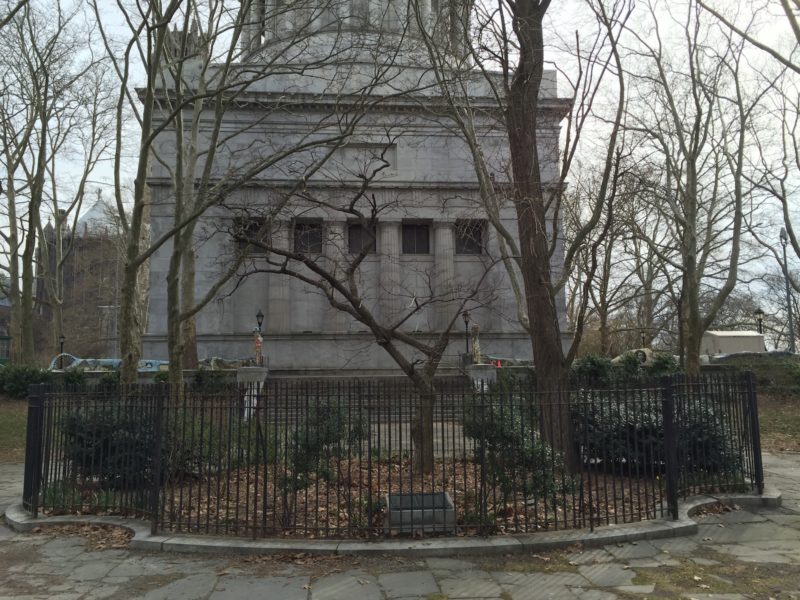
Temporary Tomb Site
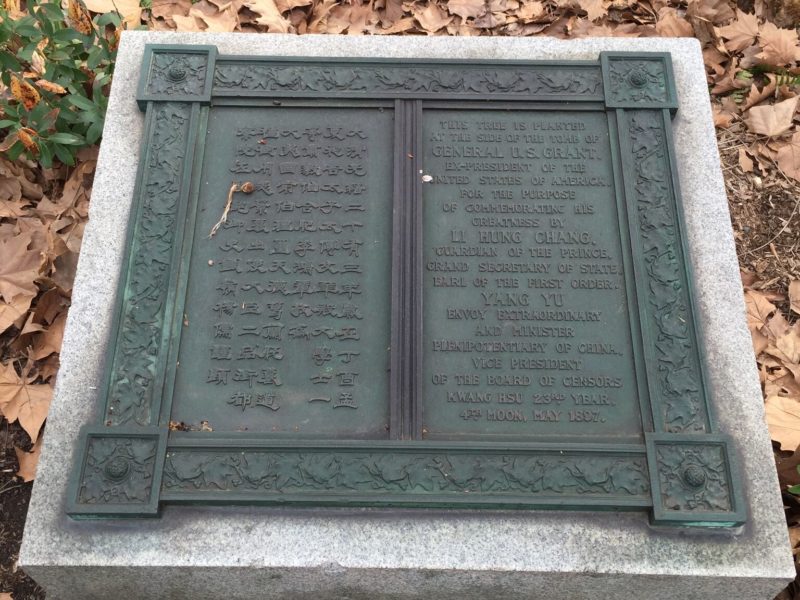
The Chinese memorial at the site of Grant’s temporary tomb
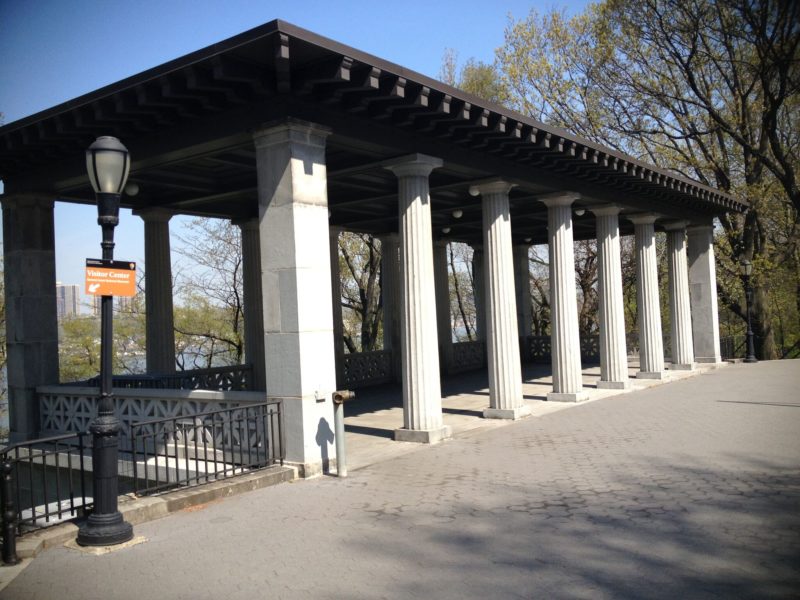
The Overlook Pavilion
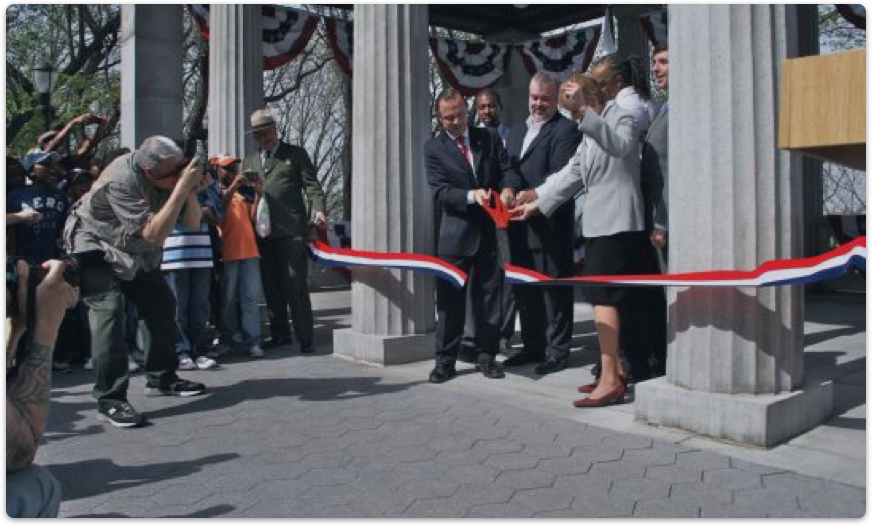
Opening of the Overlook Pavilion
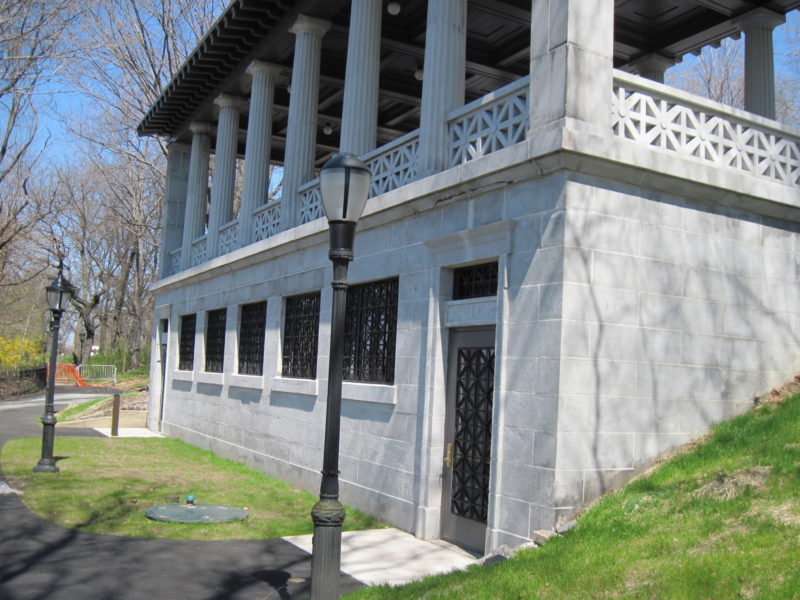
Overlook Pavilion lower level
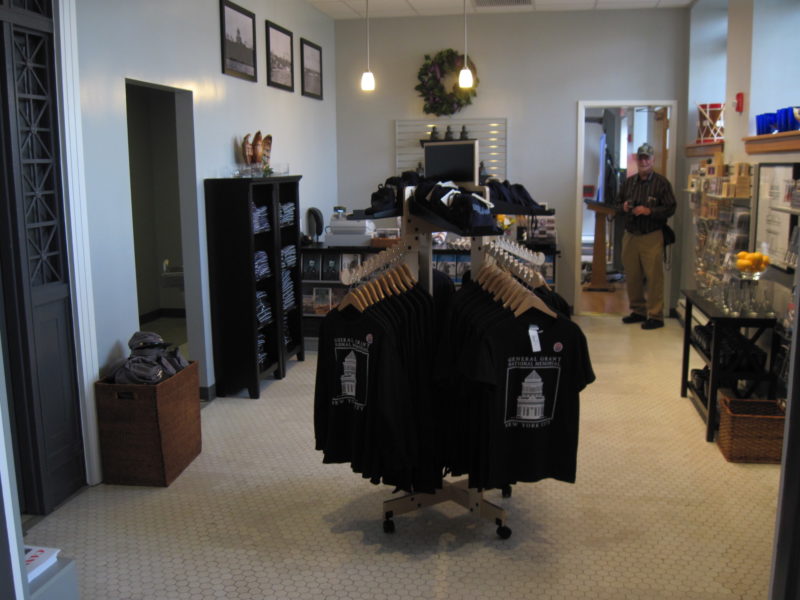
Overlook Pavilion gift shop
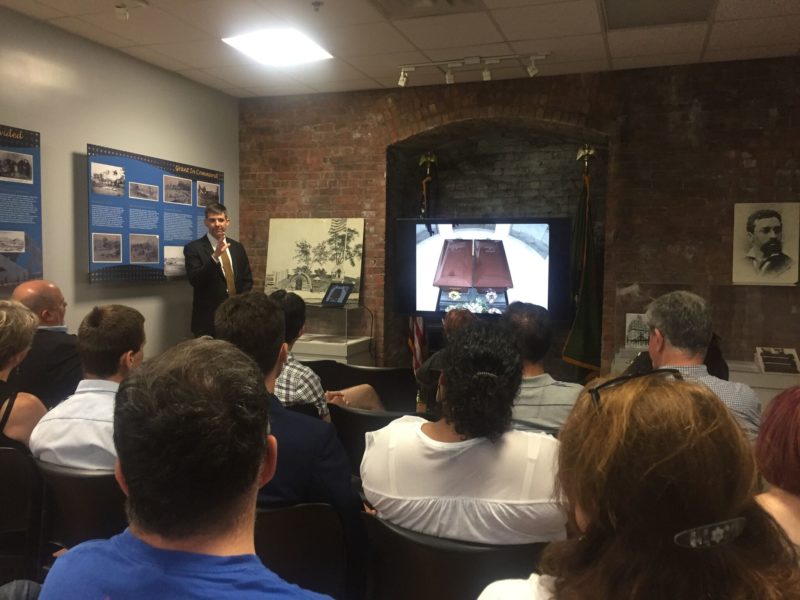
Presentation room at the Overlook Pavilion
As a service to the National Park Service and as a tool for those who wish to explore the architecture of the tomb, architect Garland Reynolds, Jr. FAIA, NCARB, Chairman of the Building Committee of the Grant Monument Association, has developed the downloadable measured floor plans, with CAD Services provided by GMA board member Vic Williams – ASSI. The measured floor plans were developed from a study of archived drawings and site visits by the architect.
